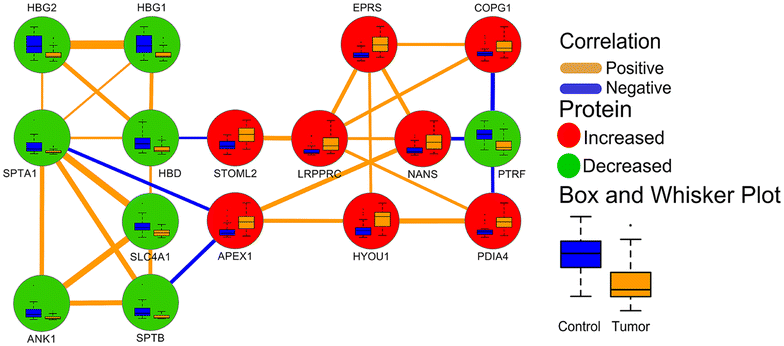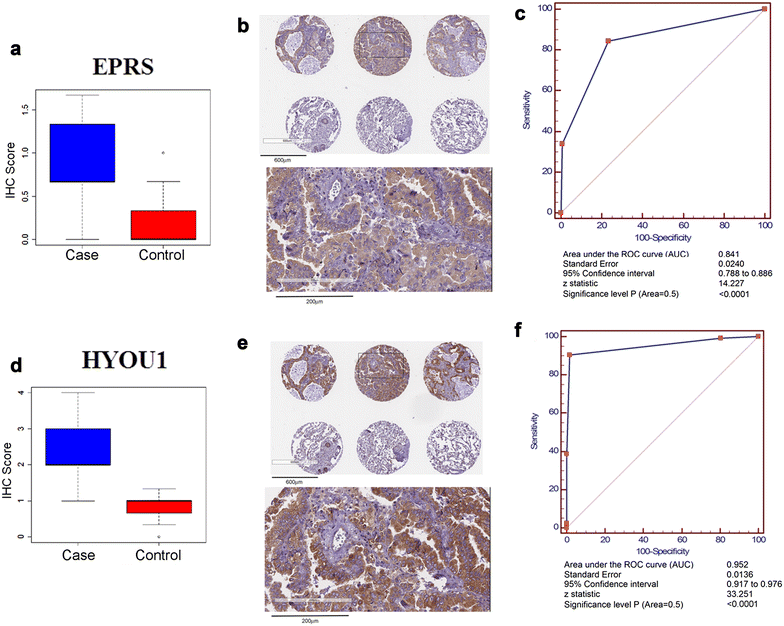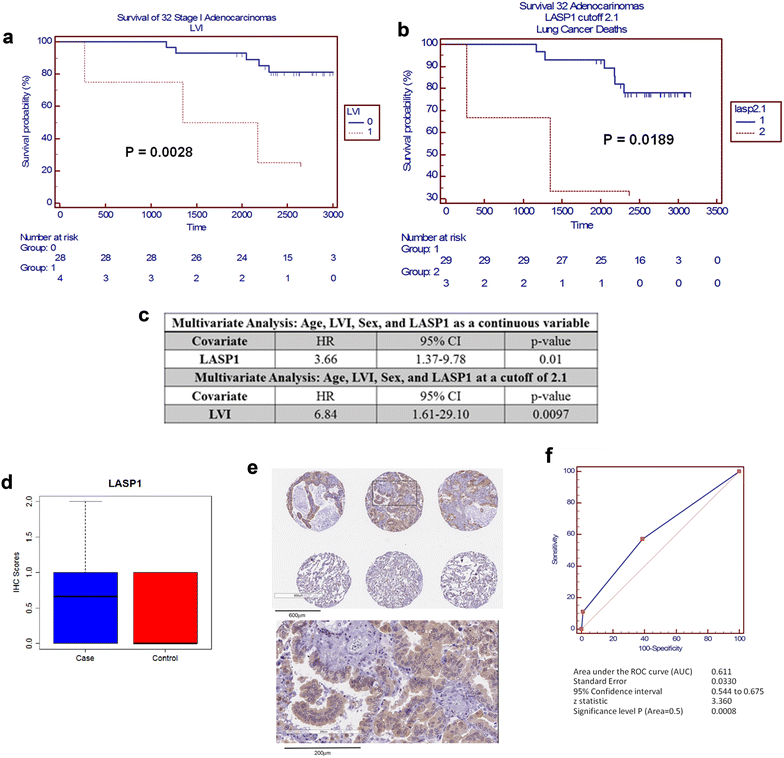Proteomic profiling of lung adenocarcinoma indicates heightened DNA repair, antioxidant mechanisms and identifies LASP1 as a potential negative predictor of survival
- PMID: 27799870
- PMCID: PMC5084393
- DOI: 10.1186/s12014-016-9132-y
Proteomic profiling of lung adenocarcinoma indicates heightened DNA repair, antioxidant mechanisms and identifies LASP1 as a potential negative predictor of survival
Abstract
Background: Lung cancer is the leading cause of cancer mortality in the United States. Non-small cell lung cancer accounts for 85% of all lung cancers for which adenocarcinoma is the most common histological type. Management of lung cancer is hindered by high false-positive rates due to difficulty resolving between benign and malignant tumors. Better molecular analysis comparing malignant and non-malignant tissues will provide important evidence of the underlying biology contributing to tumorigenesis.
Methods: We utilized a proteomics approach to analyze 38 malignant and non-malignant paired tissue samples obtained from current or former smokers with early stage (Stage IA/IB) lung adenocarcinoma. Statistical mixed effects modeling and orthogonal partial least squares discriminant analysis were used to identify key cancer-associated perturbations in the adenocarcinoma proteome. Identified proteins were subsequently assessed against clinicopathological variables.
Results: Top cancer-associated protein alterations were characterized by: (1) elevations in APEX1, HYOU1 and PDIA4, indicative of increased DNA repair machinery and heightened anti-oxidant defense mechanisms; (2) increased LRPPRC, STOML2, COPG1 and EPRS, suggesting altered tumor metabolism and inflammation; (3) reductions in SPTB, SPTA1 and ANK1 implying dysregulation of membrane integrity; and (4) decreased SLCA41 suggesting altered pH regulation. Increased protein levels of HYOU1, EPRS and LASP1 in NSCLC adenocarcinoma was independently validated by tissue microarray immunohistochemistry. Immunohistochemistry for HYOU1 and EPRS indicated AUCs of 0.952 and 0.841, respectively, for classifying tissue as malignant. Increased LASP1 correlated with poor overall survival (HR 3.66 per unit increase; CI 1.37-9.78; p = 0.01).
Conclusion: These results reveal distinct proteomic changes associated with early stage lung adenocarcinoma that may be useful prognostic indicators and therapeutic targets.
Keywords: Biomarker; Lung adenocarcinoma; Proteomics.
Figures



References
-
- Prevention CfDCa. National Center for Health Statistics. CDC WONDER On-line Database, compiled from Compressed Mortality File 1999–2012; 2014, Series 20 No. 2R.
-
- Society AC. Cancer facts and figures (http://www.cancer.org/research/cancerfactsstatistics/cancerfactsfigures2...). 2014. p. 1–60.
-
- Breathnach OS, Freidlin B, Conley B, Green MR, Johnson DH, Gandara DR, O’Connell M, Shepherd FA, Johnson BE. Twenty-two years of phase III trials for patients with advanced non-small-cell lung cancer: sobering results. J Clin Oncol. 2001;19:1734–1742. - PubMed
-
- National Lung Screening Trial Research Team. Aberle DR, Adams AM, Berg CD, Black WC, Clapp JD, Fagerstrom RM, Gareen IF, Gatsonis C, Marcus PM, Sicks JD. Reduced lung-cancer mortality with low-dose computed tomographic screening. N Engl J Med. 2011;365:395–409. doi: 10.1056/NEJMoa1102873. - DOI - PMC - PubMed
Grants and funding
LinkOut - more resources
Full Text Sources
Other Literature Sources
Research Materials
Miscellaneous
